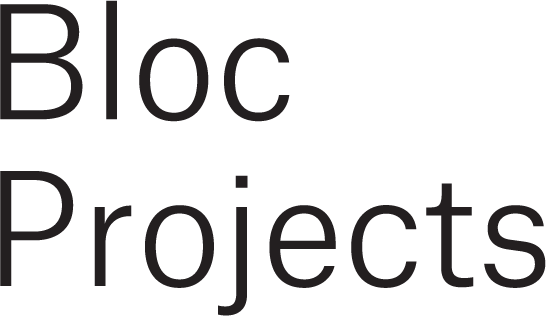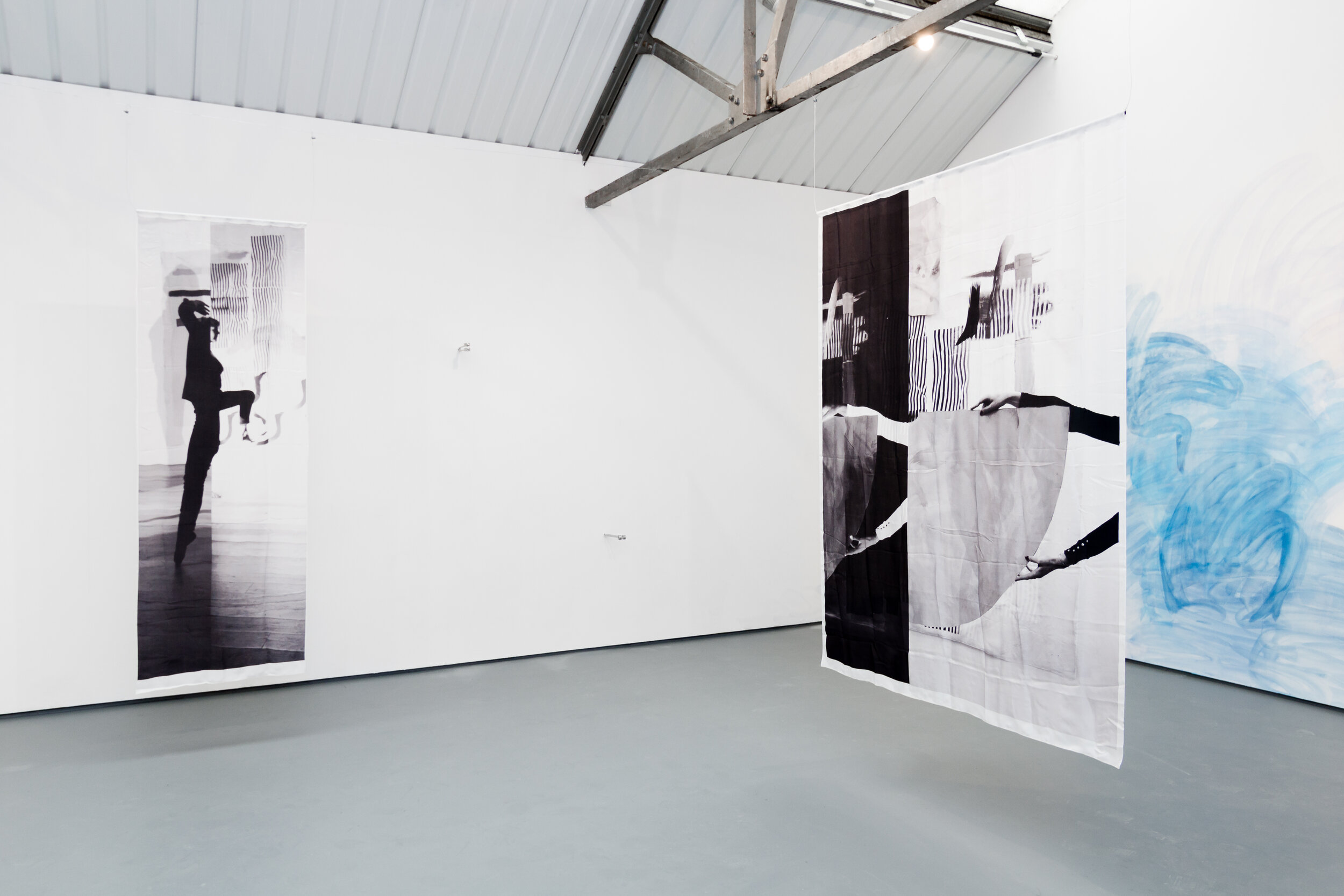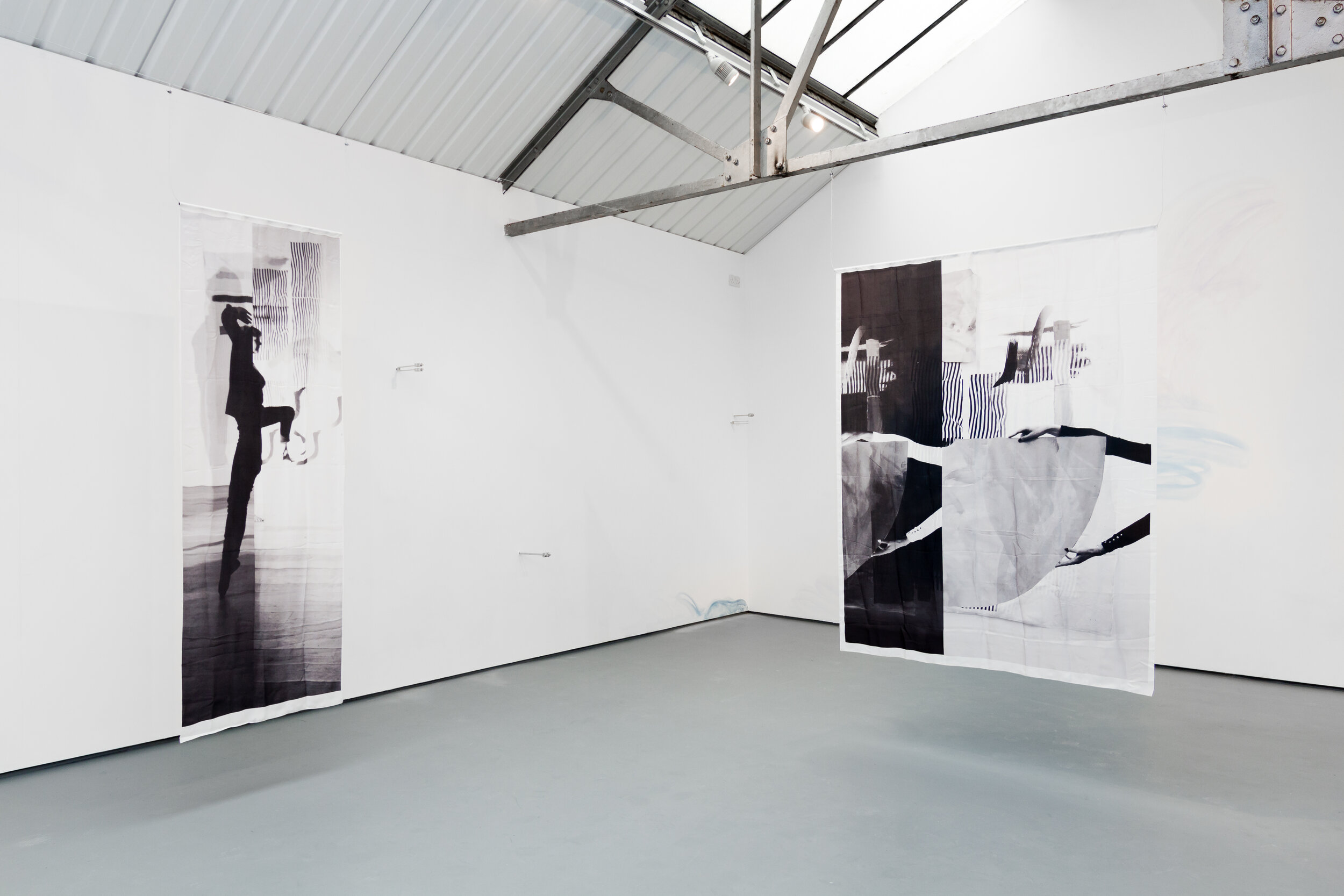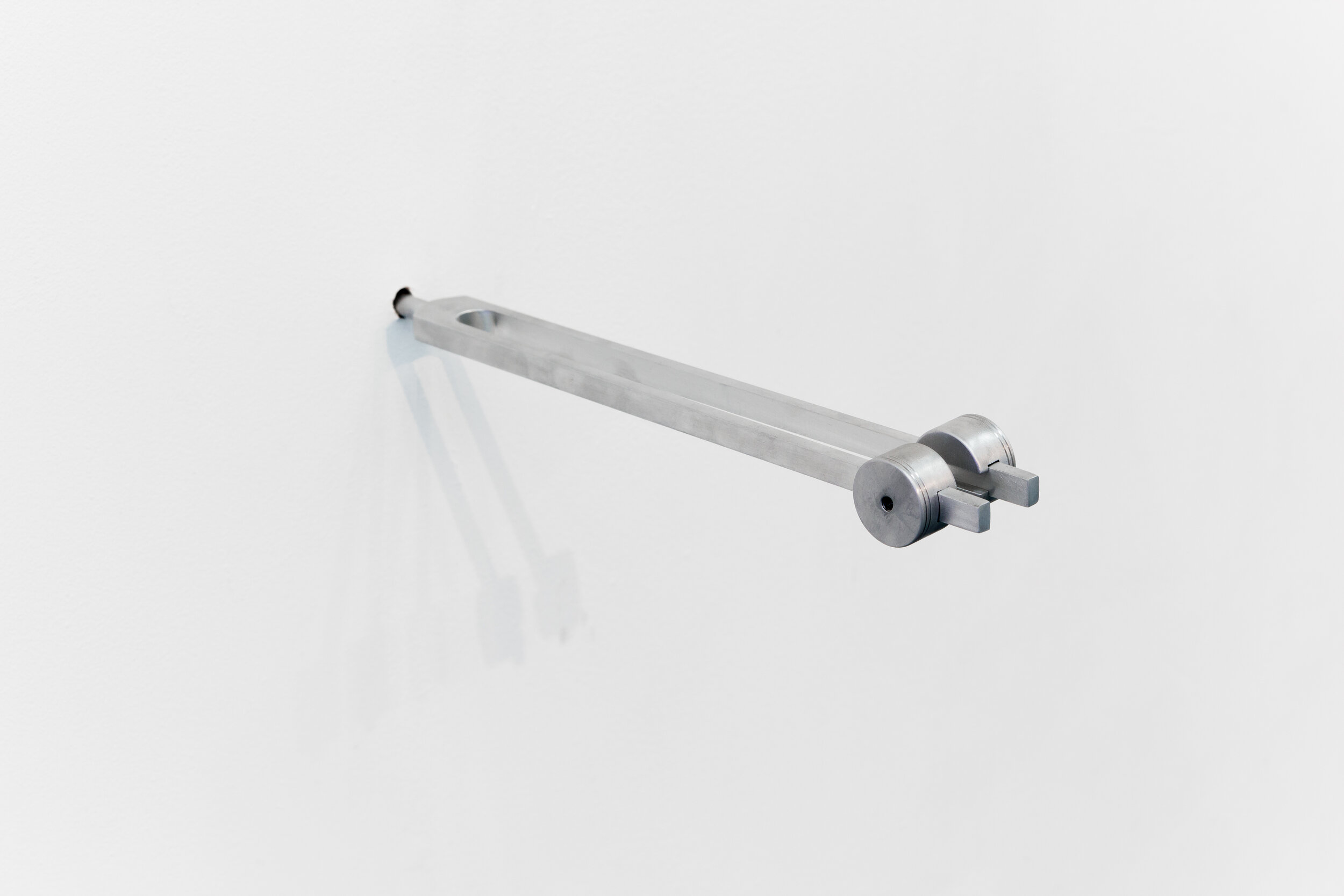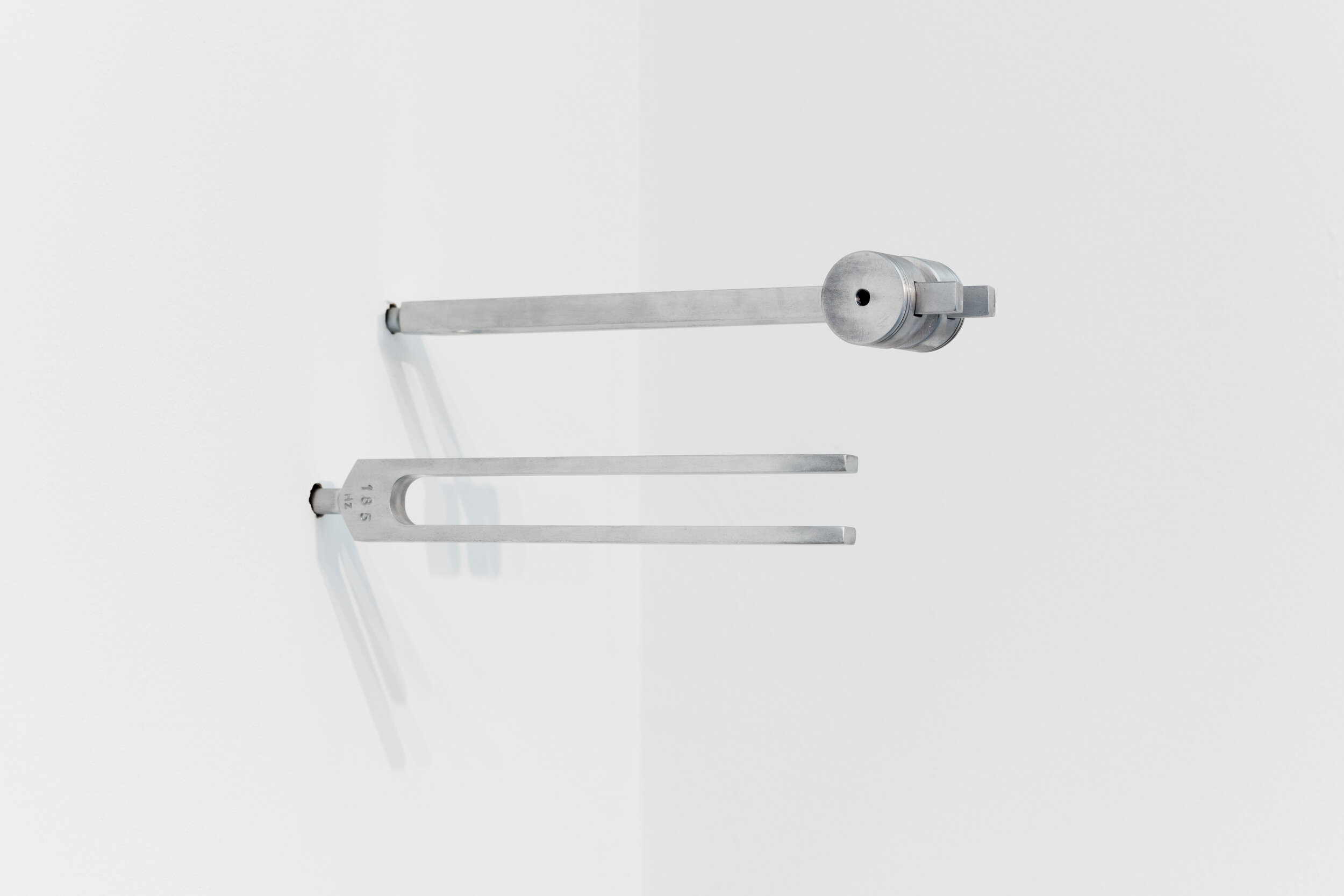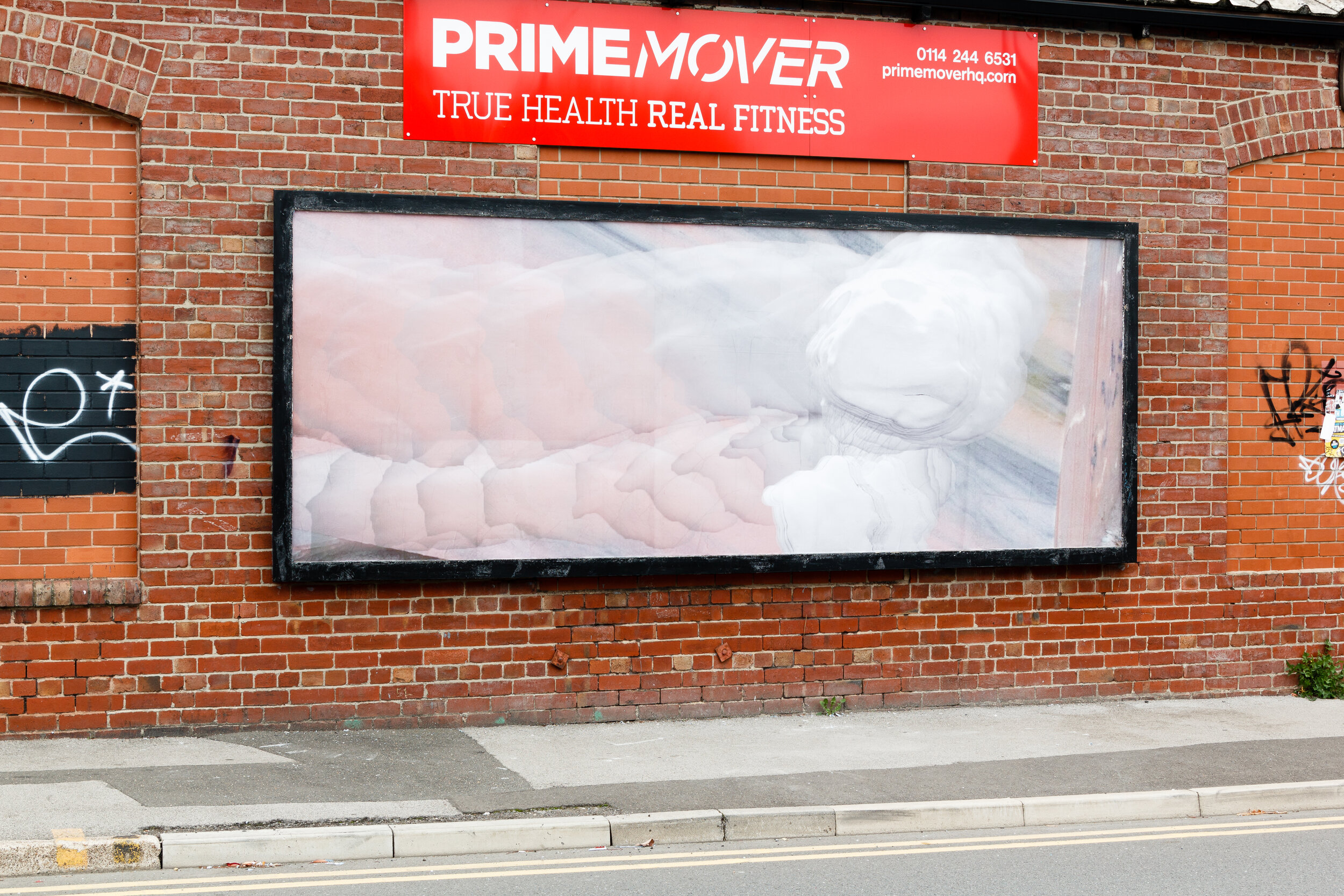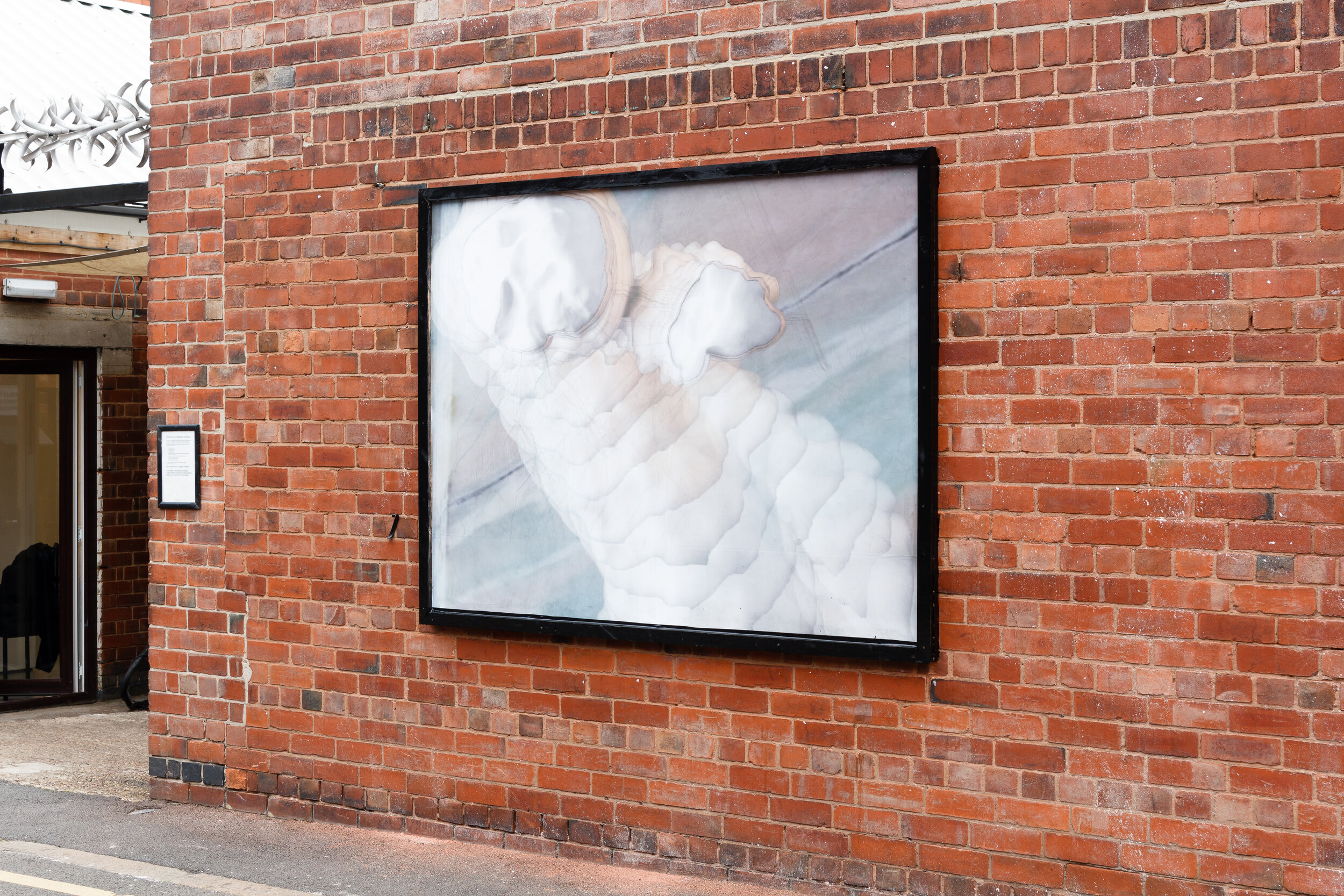The Place of the Scene
23 October – 21 November
Launch event: Friday 23 October, 6 – 8pm
Free & open to all
Rowena Harris
Fay Nicolson
Joanne Masding
Francesco Pedraglio
As the first exhibition in our newly completed space, we are delighted to present 'The place of the scene', a group exhibition featuring new and existing work by Rowena Harris, Fay Nicolson, Joanne Masding and Francesco Pedraglio.
The exhibition concerns intersections between the physical, mental and digital, exploring the possibility of occupying them simultaneously, and accepting the slippage of fiction between them. Interwoven through the works are suggestions of the body, interruptions and eruptions of sound, fragments of narrative alongside ambiguous materials and architectures. Through works in video, sculpture, painting and print, the show points to the elusive nature of the place and moment of production, and with it a sense of something unfolding, like a gesture within a broader sense of actions.
Rowena Harris’ new work 'And as a veil rather than solid. And as skin rather than sight,' 2015, takes its title from a line in Michael Serres’ 1985 book The Five Senses. Combining a single channel video and a collection of wall-based sculptures, the work explores the human form as both tangible and familiar and yet ruptured and distributed through time and space. Centred around the notion of a fractured digital human skin, produced through a collapse of the virtual and the real, it echoes a mediated contemporary experience, in which the digital realm forms part of everyday experience and construes a new sense of reality. Harris’ film and sculptural works draw from the gallery’s former use as a site for the production of tuning forks, and echo the bodily frequencies of the head, hands, chest cavity and maxilla (sinus), installed at their corresponding heights. The sculptures are intended as a physical analogy of passing through and beyond the body—the frequencies of their notes correspond and resonate with the interior so that, when played, the notes are simultaneously within and beyond the skin.
Continuing the exhibition beyond the gallery space, Joanne Masding’s work occupies two billboard sites on the exterior of the building, extending her interest in the relationship between lived experience and its digital counterpart. Merging digital and sensory experience, her works explore the point at which physical matter meets immaterial image. They portray amorphous forms that appear both static and animate, as though digitally produced and yet hand-made or naturally eroded into a material surface. The images act as obstacles to be tripped over, both physically and visually, and interrupt the space around them. Masding has approached the billboard as a space analogous to that of video, in which she often works. In flattening the frames of a video as a storyboard overlaid into one rectangle, the billboard suggests something durational, an image to be read from left to right. She combines this with the z-axis (depth), so that the billboard, like video, becomes a space whose depth becomes skewed; its representational space infinitely deep, yet its materiality only a single layer.
Fay Nicolson’s works continue her exploration of the relationship between experience and record, process and surface. Playing with the physicality of images, along with possibilities for formal and material transformation through repetition, her final works often exist as fragments of a wider aesthetic project. This approach is apparent in Between law and feeling I and II, and Appearance I, all 2015, three digital photographic prints on sheer silk, which frame a series of abstracted human figures poised in front of patterned backdrops. These backdrops trace back to, and have been built from, a series of large screen printed works shown in Nicolson’s recent solo exhibition 'Play Sense', at Gerald Moore Gallery, London. Images that capture gestures of bodily performance taken by the artist in her studio, render limbs and profiles as visual supports for the digitally produced patterns and hand-made marks that are overlaid within her prints.
Nicolson’s work 'Sleight of hand' further hints at other actions and places, echoing the gestures of washing and cleaning, or the marks of primary school play. In washing sections of the gallery wall with watercolour paint, she echoes a technique often used on paper in her studio to create large coloured surfaces on which to work, while evoking rudimentary painting techniques and crude decor.
Francesco Pedraglio’s digital video 'The Malady of Telling and Being Told', 2014, aligns with his research on performativity, basic narrative structures and storytelling. Attempting to tell something out of nothing and imposing meanings on situations that are otherwise overlooked, the work gathers together abstract visual, textual and vocal elements to construct the feeling of a story and describe its potential characters. Shot while walking from one end of his studio to the other, Pedraglio references a sense of the frustrating and exciting connotations that the idea of the ‘artist’s studio’ brings about: boredom, lack of means and yet constant attempts at making something work. The video is structured around a circular journey. As the artist physically drags the camera through the room, it encounters supposedly uninteresting items. Through his addition of a graphic ‘frame’ and subtitles that give abstract directions on how a story might begin, the journey begins to take on a narrative pattern. Interrupting and yet anchoring the film are a selection of images of coloured walls found around the artist's flat and a female voice that slowly demonstrates the best way to pronounce English vowels. The intuitive ordering and collaging of the shapes along with an increasing sense of seductiveness further point towards a desire to create meanings where there aren’t any; something out of nothing.
Rowena Harris b. 1985, Norfolk, UK, lives and works in London. Forthcoming solo exhibitions include The Third Hand Prosthesis, Object A, Manchester, 2015. Recent solo exhibitions include Being both on and within, as I said, The Gallery Apart, Rome, IT, 2015; P.A.R.T.S, Coleman Projects, London, 2013 and Believing in Things, Van Horbourg, Basel, CH, 2011. Recent group exhibitions include And so we gape (performance) Nero, Rome, IT; Conversation Piece | Part 1, Fondazione Memmo, Rome, IT; Image object, Artuner; Mostra, The British School at Rome, IT, (all 2015); Chronovisor archive, South Kiosk, London, 2014; The Starseed Transmission, Enclave Projects, London and The Open Cube, The White Cube, London, (both 2013). In 2014–15 she was awarded a one year residency at The British School at Rome. She is the founder of Misery Connoisseur Magazine and in 2014 initiated Tenderbooks, London.
Joanne Masding, b. 1985, lives and works in Birmingham. Her solo exhibitions and residencies include Echo, South Wales Echo for Cardiff Contemporary, curated by Sean Edwards, 2014; Lacquer Moving Lightly, Embassy Gallery, Edinburgh, Scotland 2013, Joanne Masding at 501 Artspace, Chongqing, China 2013; The Heterotic I, Temple Bar Gallery and Studios, Dublin, Ireland, 2013 and Standpoint Futures, Standpoint, London, 2013. Group exhibitions include Wish You Were Here, MAC, Birmingham, Berwick-upon-Tweed Museum and Art Gallery, Northumberland and Hestercombe Gallery, Somerset, 2015; Birmingham Show, Eastside Projects, Birmingham, 2015; End, Federation House, Manchester, 2014; Kill Your TV, Worcester Museum, Worcester, 2014; Objectness, Outpost members exhibition selected by Peles Empire, Outpost, Norwich 2013 and Strabismus, Mexico, Leeds and The Lombard Method, Birmingham, 2013. Masding is Director of The Lombard Method, Birmingham.
Fay Nicolson b. 1984, Derby, has an MA from the Royal College of Art (2011) and a BA from Central Saint Martins College of Art and Design (2006). Recent solo exhibitions include: Over and Over Pure Form, Grand Union, Birmingham; Play Sense, Gerald Moore Gallery, London, UK (both 2015); A P E L, Almanac Projects, London, UK; P A R E, West Lane South, London, UK, Work with Material; Künstlerhaus Wien, Vienna, AU (all 2013) and Bad Signs, PLAZAPLAZA, London (2012). Recent Group shows include Madrugada, Tomorrow Gallery, New York, USA; Jacopo Miliani, Fay Nicolson, Jackson Sprague, Frutta Gallery; Elapse / End, Maisterravalbuena, Madrid, ES; As it seems, Cosar HMT, Dusseldorf, DE; Palourde Cuites, Christopher Crescent, Brussels, BE; Mostyn Open 19, Mostyn Gallery, Llandudno, UK; Exquisite Collapse, blip blip blip, Leeds, UK and The Decorator and the Thief (…), NGCA & Priestman Gallery, Sunderland, UK (all 2015).
Francesco Pedraglio, b. 1981, Como. He has recently exhibited and performed at Piano Nobile, Geneva; Norma Mangione Gallery, Turin; The Physics Room, Christchurch, New Zealand; Kunsthalle Wien; DropCity, Newcastle (all 2015); MAZ-Museo de Zapopan, Mexico; CCA Glasgow; Hayward Gallery, London (all 2014); Rowing, London and Jeu de Paume (2013); Kunsthalle Basel, ICA, London; Auto Italia South East and Galerie Kamm, Berlin (all 2012); Hollybush Gardens, London, The National Portrait Gallery and Wysing Arts Centre, Cambridge (2011). His first novel A man in a room spray painting a fly was published by Book Works in summer 2014. Also in 2014 he was also the co-editor of the anthology of artists writings Cadavere Quotidiano, published by X-TRA (Los Angeles). The Object Lessons, a novella made in collaboration with Nina Beier and Marie Lund, was published by Mousse in 2012. Pedraglio is a founding member of the London based curatorial initiative FormContent.
Images by Jules Lister
